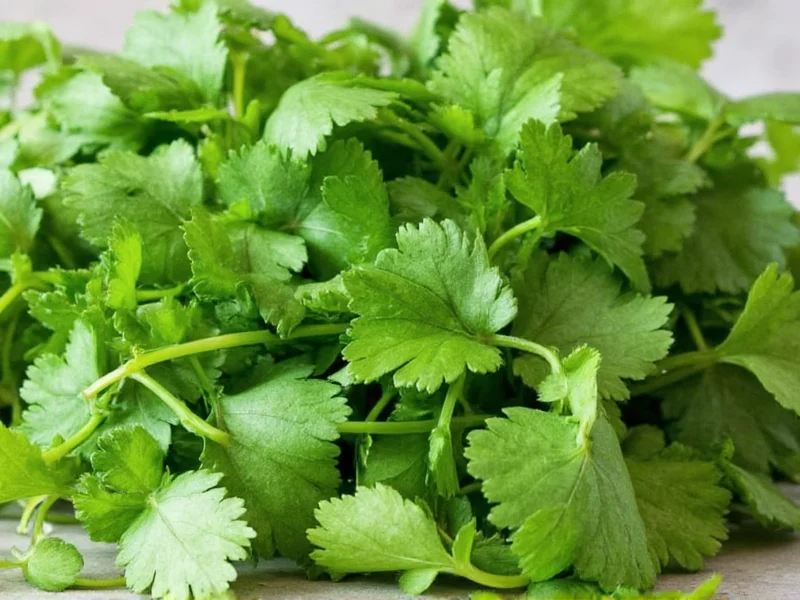If you're searching for cilantro replacements, you're not alone. Approximately 21% of the population carries a genetic variation that makes cilantro taste like soap. Whether you're cooking Mexican, Southeast Asian, or Indian cuisine, finding suitable cilantro alternatives ensures your dishes maintain authentic flavor profiles without compromising your dining experience.
Why People Need Cilantro Substitutes
The primary reason for seeking cilantro replacements is the genetic predisposition that causes soapy taste perception. Other common reasons include seasonal unavailability, recipe adaptation for different cuisines, and personal preference. Understanding your specific need helps select the most appropriate substitute. For instance, best cilantro substitute for salsa differs from replacements needed for Thai curry or Indian chutney.
Top Fresh Herb Alternatives
When replacing fresh cilantro in recipes, consider these options based on flavor profile and visual appearance:
| Herb | Best For | Substitution Ratio | Flavor Notes |
|---|---|---|---|
| Flat-leaf parsley | Garnishing, salads, salsas | 1:1 | Milder, grassy flavor without citrus notes |
| Culantro (recao) | Soups, stews, Caribbean dishes | 1:2 (use half) | Stronger, more pungent than cilantro |
| Basil + mint blend | Guacamole, fresh salsas, ceviche | 1:1 (equal parts) | Provides similar freshness with herbal complexity |
| Epazote | Bean dishes, Mexican cuisine | 1:3 (use less) | Distinctive flavor, use sparingly |
Dried and Powdered Alternatives
When fresh herbs aren't available, these dried options work well as cilantro replacement in guacamole or other dishes requiring ground spices:
- Coriander powder - The seed of the cilantro plant offers earthy, citrus notes without the soapy taste
- Dried oregano + cumin blend - Use ½ tsp oregano with ¼ tsp cumin per tablespoon of fresh cilantro
- Herbes de Provence - Works surprisingly well in Mediterranean-inspired dishes
- Ground paprika - Adds color and mild flavor for garnishing purposes
Selecting the Right Replacement by Cuisine
The ideal cilantro substitute varies significantly by culinary tradition. Understanding regional flavor profiles helps maintain authenticity:
Mexican and Latin American Dishes
For best cilantro substitute for salsa, try a 50/50 blend of flat-leaf parsley and fresh mint. This combination preserves the bright green color while providing similar freshness. In guacamole, add a squeeze of lime juice to compensate for lost citrus notes.
Southeast Asian Cuisine
When making Thai or Vietnamese dishes, substitute culantro (recao) which has a stronger flavor that holds up in soups and curries. For cold noodle dishes, try a combination of Thai basil and mint.
Indian and Middle Eastern Recipes
Coriander powder works exceptionally well in spice blends and chutneys. For fresh applications, try a mix of mint and dill which provides similar cooling properties without the soapy aftertaste.
Common Substitution Mistakes to Avoid
Many home cooks make these errors when seeking cilantro replacements:
- Using curly parsley instead of flat-leaf (curly has stronger bitterness)
- Substituting too much dried herb for fresh (remember the 3:1 fresh-to-dried ratio)
- Adding substitutes at the wrong cooking stage (delicate herbs should go in at the end)
- Ignoring the role of acid (lime or lemon juice often compensates for lost citrus notes)
Testing Your Cilantro Replacement
Before committing to a full recipe, test your substitute with this simple method: Mix 1 tablespoon of your chosen herb with 2 tablespoons of plain yogurt or sour cream. Let sit for 15 minutes, then taste. This mimics how the herb will interact with other ingredients in your dish. Adjust ratios as needed before incorporating into your main recipe.
Creating Your Own Custom Blend
For the most versatile cilantro replacement for people who taste soap, create a signature blend:
- Start with 2 parts flat-leaf parsley
- Add 1 part fresh mint
- Include ½ part fresh basil
- Finish with a squeeze of lime juice
This combination works across multiple cuisines and provides the visual appeal and freshness of cilantro without triggering the soapy taste perception. Store your custom blend in airtight containers with damp paper towels for up to five days.
What is the best cilantro substitute for people who taste soap?
The most effective cilantro replacement for people with the soapy taste gene is a blend of flat-leaf parsley, mint, and basil. This combination provides similar visual appeal and freshness without triggering the genetic taste receptors that perceive cilantro as soap. For cooked dishes, culantro (recao) offers a stronger flavor that withstands heat better than fresh cilantro.
Can I use dried cilantro as a replacement?
Dried cilantro loses most of its distinctive flavor and isn't recommended as a direct replacement. Instead, use coriander powder (the dried seeds of the same plant) which offers earthy, citrus notes without the soapy aftertaste. For every tablespoon of fresh cilantro, substitute 1 teaspoon of coriander powder plus a squeeze of lime juice to restore brightness.
What's the best cilantro substitute for guacamole?
For guacamole, the ideal cilantro replacement is a 50/50 blend of flat-leaf parsley and fresh mint. Add extra lime juice to compensate for lost citrus notes, and consider a pinch of ground cumin for depth. This combination maintains the vibrant green color while providing similar freshness without the soapy taste that some people experience with cilantro.
How do I substitute cilantro in salsa?
The best cilantro substitute for salsa is a combination of flat-leaf parsley and fresh oregano. Use equal parts of both herbs, plus a squeeze of lime juice. For tomato-based salsas, add ¼ teaspoon of ground coriander to enhance the earthy notes. Remember to chop the herbs finely and add them just before serving to preserve their fresh flavor.
Is culantro a good cilantro replacement?
Yes, culantro (recao) makes an excellent cilantro replacement, especially in cooked dishes. It has a stronger, more robust flavor that holds up better in soups, stews, and braises. Use half the amount of culantro compared to cilantro since it's more potent. Note that culantro has long, serrated leaves rather than the delicate fronds of cilantro, so it works best in recipes where appearance isn't critical.











 浙公网安备
33010002000092号
浙公网安备
33010002000092号 浙B2-20120091-4
浙B2-20120091-4